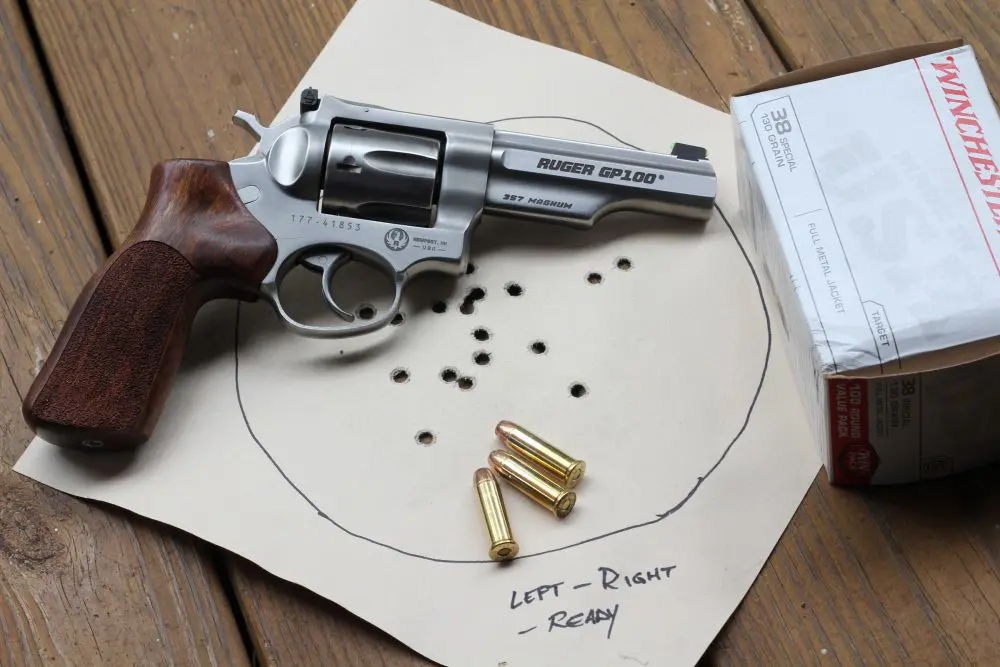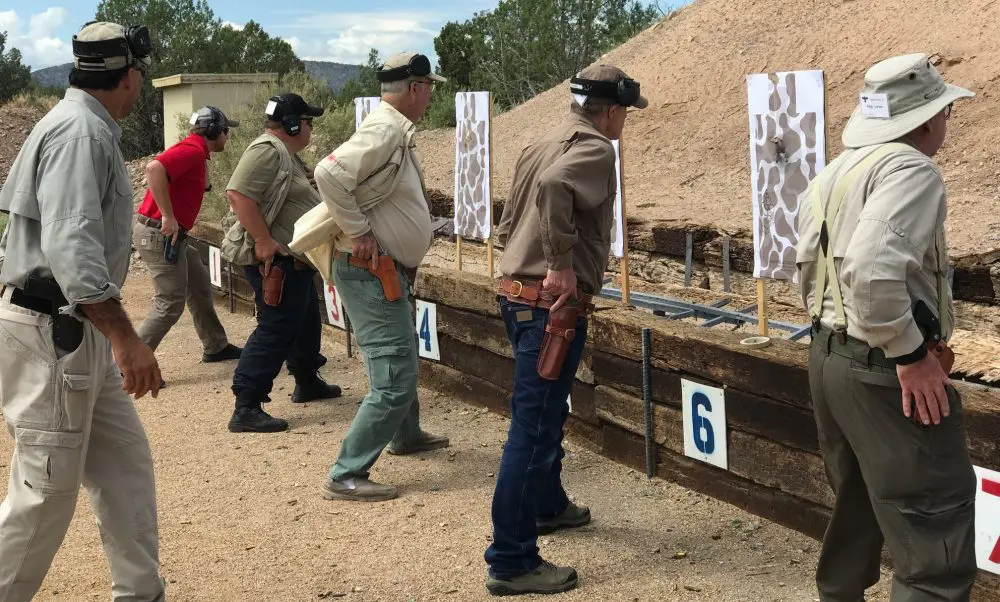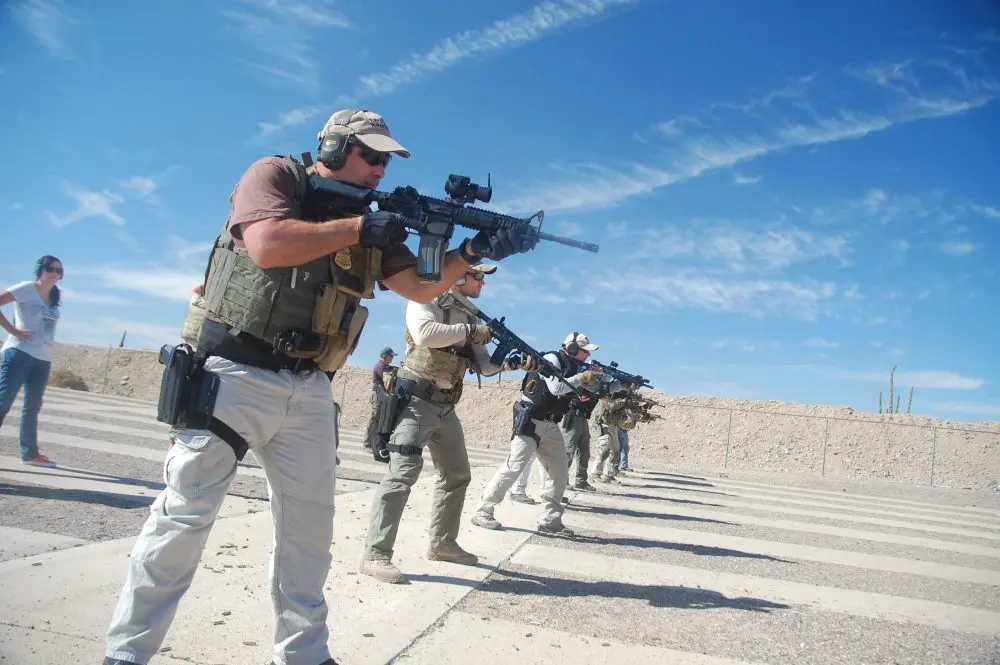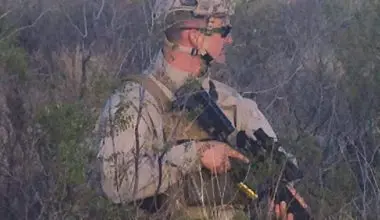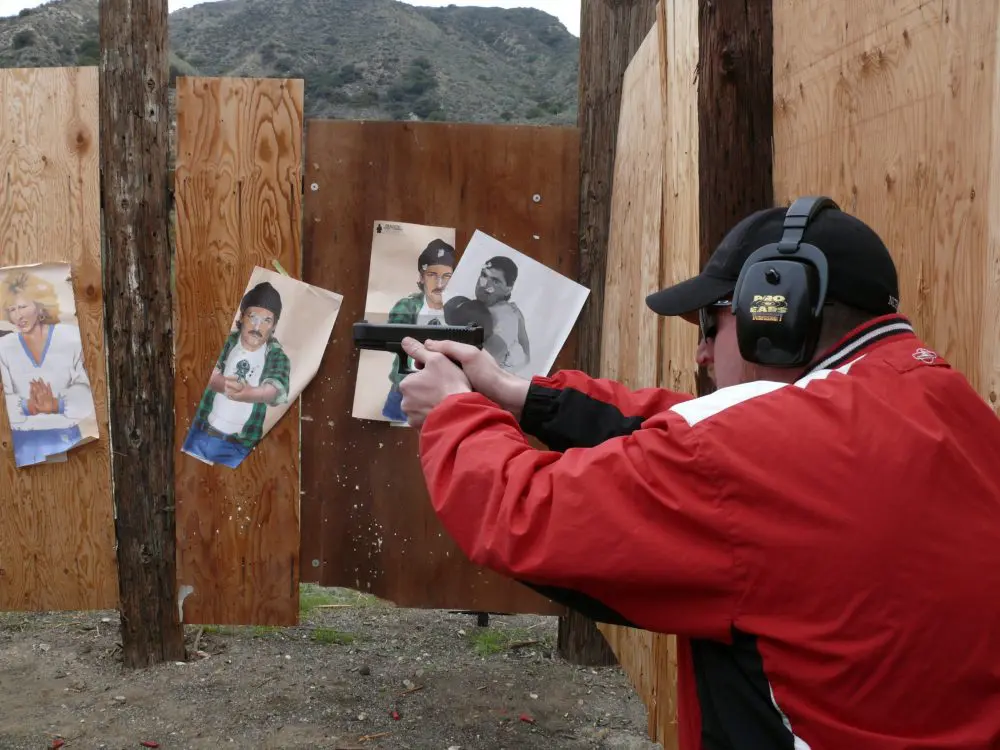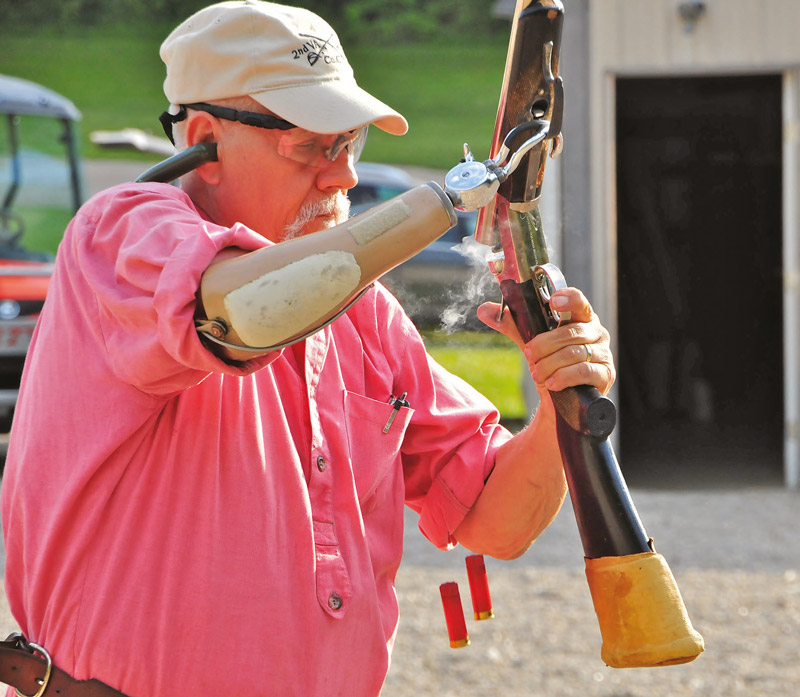
When I say amputee, what comes to mind? Do you think of words like despair and confusion? Many amputees do begin the journey into their new life with these emotions.
Trauma manifests itself in myriad ways upon the human psyche. In time, if the person is of the correct mindset and is shown the right path by those who have traveled that same road, they rise up and move forward past their disability.
Recently I was offered the opportunity to attend a firearms training class like no other. It was held at Tactical Defense Institute (TDI) in West Union, Ohio and was hosted by SRT Prosthetics & Orthotics. The course was “Handgun I-III for Amputees and the Physically Challenged” and followed the standard curriculum for TDI’s Handgun I-III course.
This was the second year such an ambitious course was held, and various sponsors helped make it a reality. It’s expected to see such a shooting event draw the attention of tactical gear manufacturers like Vertx and Wiley-X, who kicked in with eye protection and apparel respectively. However, the class also received generous support from orthotics and prosthetics manufacturers like WillowWood, Endolite North America, and SPS Co.
In today’s anti-gun climate, it’s rare to see non-tactical-gear manufacturers join a firearms training event. Many thanks to the aforementioned manufacturers. Your efforts were much appreciated.
Table of Contents
RESTORING HOPE
In early 2012, I was contacted by my friend Sam Santa-Rita, founder and CEO of SRT Prosthetics & Orthotics. SRT was started in 2002 in Fort Wayne, Indiana and has grown to nine offices including the National Prosthetic Center in Indianapolis. SRT encompasses much more than I can cover in this article. Read over their website and it’s easy to see that they’re in the business of restoring hope.
It’s a fact that a broken spirit alone can kill an otherwise healthy person. Losing the will to live after an accident that’s cost you a limb can take you out as fast as any disease. SRT finds creative ways to restore not only the body, but also the spirit.
Leading the drive at SRT is Sam Santa- Rita. Sam is a first-generation American who graduated from the University of Toledo, where he earned his BA in Political Science. He then graduated from Shelby State in Memphis, Tennessee with his Prosthetics Certificate. Sam has also chosen to serve, part-time, as an Ohio peace officer. He graduated from the academy in 2009 at the age of 41. He was his class’ Top Gun award holder and received the top test score. In keeping with his love of learning and teaching firearms skills, he has been an instructor with TDI since 2010.
When Sam approached me to write about this class, I had doubts about my own ability to cover such complex subjects as prosthetics and orthotics.
Long before I became a cop, I worked in health care as a surgical assistant, where I saw my fair share of amputations and the effects of life-altering accidents. Many times we saved the patient’s body but killed their spirit. This class with SRT allowed me to see the spirit rebuilt.
At SRT they strive to bring new technologies to the forefront, and no technology has propelled prosthetics into the bionic realm like the BiOM.
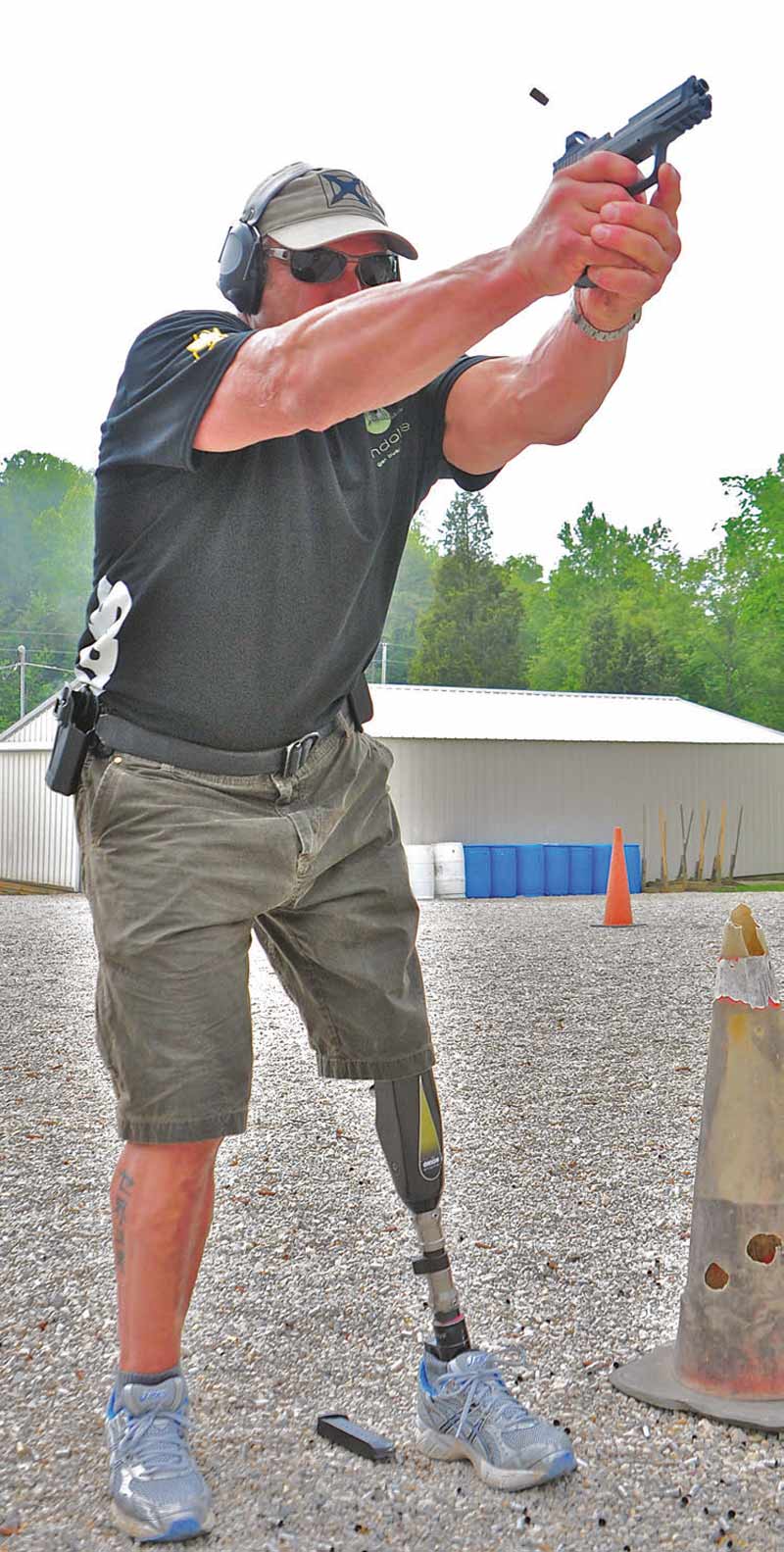
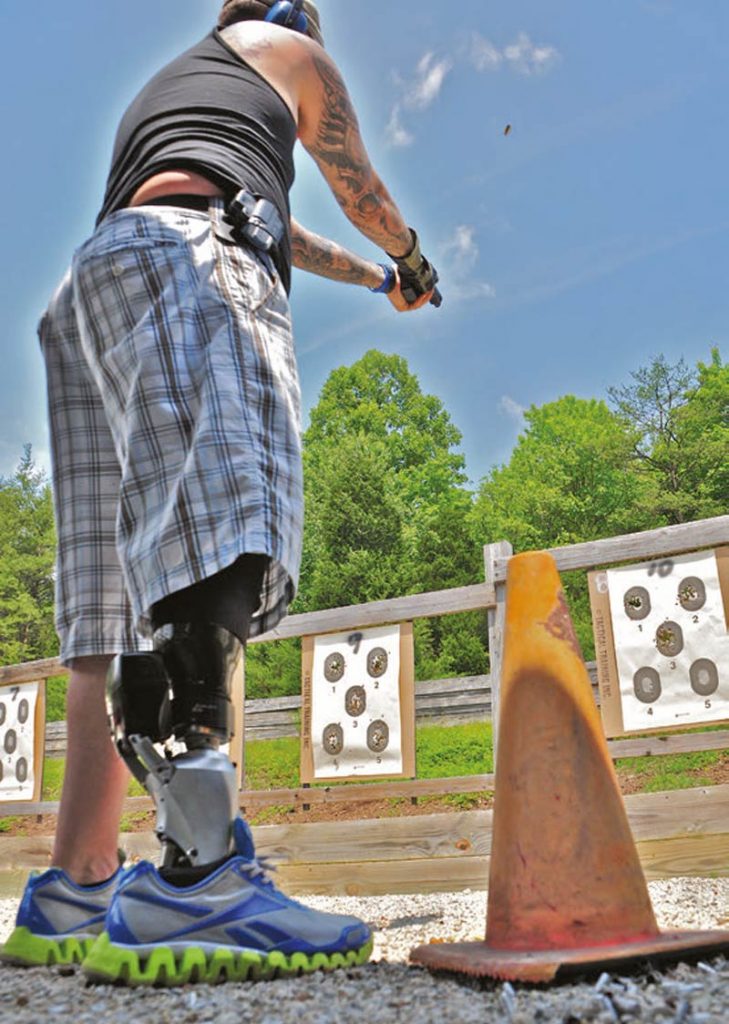
BiOM BY iWALK
When you hear the word bionic, it isn’t reality that usually comes to mind. Well, I’ve seen a bionic limb that propels its wearer like one made of flesh and bone. It doesn’t get tired, needs little maintenance, and only requires a few seconds to swap out batteries. The battery on this limb weighs far less, and is considerably smaller than, those found on topend cordless drills, and yet it cranks out over 25 volts of power.
I’ve seen amputees walk, shufflestep sideways, SWAT/Groucho walk, and even flat-out run with this device. It’s called the BiOM foot and it’s made by iWalk.
The BiOM is the first limb to replace lost muscle function. It’s not just a series of prosthetics that replicate the length of the lost limb. To fully restore the natural human gait, you must have something called “toe off.” This is when the calf muscles autonomically fire to drive your body forward.
The BiOM is not actually a leg. It’s a highly technical foot and ankle combination that accurately mimics the various motions that non-amputees go through on a typical day. The BiOM is the only prosthesis in the world that does not depend on the wearer’s energy. For the first time, the prosthesis is driving the human, instead of the other way around. The BiOM is the only device in commercial production that achieves bionic functionality where robotics effectively emulate natural movement.
As a firearms instructor, I know the footwork required to do certain maneuvers when working around barriers. TDI does more movement drills than most places where I’ve trained, and I wondered how the sensors in the BiOM would react to the motions needed to make it through TDI’s Handgun I-III.
Sam was prepared for my questions and put me in contact with SRT’s Vice President of Clinical Operations Shawn Brown. Shawn can give you a visceral definition of the technology involved in this device because he uses one daily.
In 1992 an industrial accident irrevocably changed Shawn’s life—for the better. In a moment of inattention by a co-worker, Shawn lost his left foot in an Indiana grain elevator. Normally considered a tragic accident, this actually redirected Shawn’s life in a very positive way.
Not only did Shawn go skiing in Switzerland the following winter, he also went on to compete in the 1996 Paralympic Games in Atlanta, Georgia, as well as the 2000 Paralympic Games in Sydney, Australia. Shawn is a two-time gold medalist in the discus event, where he held a World Record from 1994 to 2004.
Shawn would later turn his disability into his career when he attended California University, Dominguez Hills prosthetic program to become a Certified & Licensed Prosthetist and Orthotist. In 2003, Shawn joined the SRT family, serving the amputees of his home community.
I asked Shawn if he had to do it over again, would he? He flashed his warm smile and said, “Not only would I do it over again, I’d set my alarm for that morning so I wouldn’t miss my amputation.” Gratitude from adversity, triumph from tragedy? Who are these people? They’re amputees who choose to live life instead of let life have its way with them.
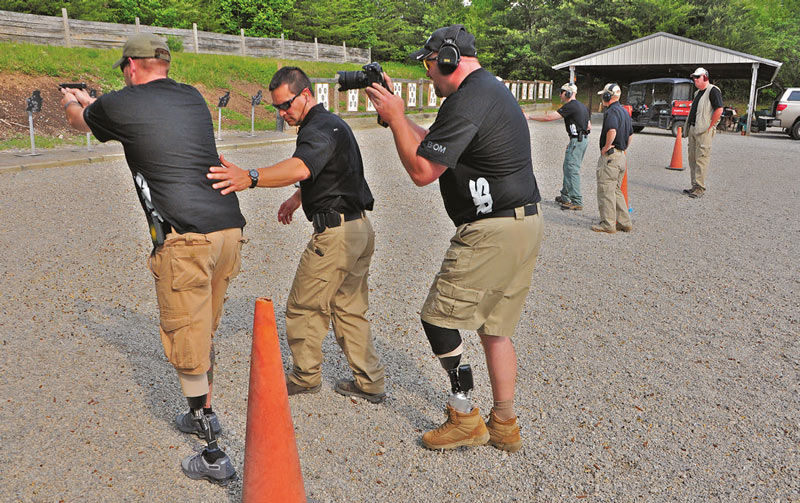
KNOWLEDGE APPLIED
The first time I met Shawn, I heard him coming before I saw him. His BiOM foot instantly drew my attention as I watched him approach. He was walking down a hill toward me and the BiOM was actually creating braking force as the ankle smoothly rolled forward, allowing his natural leg to just … walk. The BiOM allowed for a consistency of gait that I was not accustomed to seeing in amputees. Had he not been wearing shorts, I would’ve thought this man approaching me was a non-amputee. Instead of the swinging motion endemic to prosthetic limbs, this one smoothly planted then propelled him forward.
In watching the several BiOM samples that were being tested at the class, I was able to see just how much power the foot can deliver at toe off. The BiOM provides more power when you walk faster, and less when you walk slowly. You’re not relegated to a “one size fits all” design. In fact, the technician can adjust the BiOM to the end user’s desire via a Bluetooth-enabled tablet PC from a considerable distance. In doing so, the BiOM can be commanded to deliver a natural gait at variable speeds like other prostheses have never been able to achieve.
HOPPIN’ AND POPPIN’
During this class, students were asked to do a multitude of exercises that their non-amputee counterparts are also required to do while attending classes at TDI. With the exception of one young man with cerebral palsy, who needed to sit from time to time during his shooting exercises, everyone shot while on their feet.
The first day of class was filled with a meet and greet and some class time. The TDI staff make it a point to involve students in the learning process whenever possible. Classroom time is known for lots of thought-provoking conversations and student/instructor exchanges. Not involving students in the learning process is a failure waiting to happen.
After lunch, footwork and weapons manipulation was covered, to be sure everyone was on the same page. The day finished with some basic drills of slow firing and drilling in muzzle awareness and weapon manipulation.
In the shooting world, movement drills are sometimes called Runnin’ and Gunnin’. In the amputee community, they’re known as Hoppin’ and Poppin’ and yes, humor is fully implied. The amputee community embraces their struggles and revels in the highs and lows. Put like-minded individuals in the same proximity and give them something fun and challenging to do, and you’ll make fast friends. This was indeed the case at this class.
SRT and iWalk provided several BiOM feet for folks to try out. This of course required a bit of adjustment to the leg support known as the pylon. If a student happened to be undergoing an adjustment to their pylon or foot by the SRT staff they would, from time to time, call out to someone to hand them something. At that moment, you might hear someone call back, “Why don’t you just hop your one-legged ass over there and get it yourself?” Yeah, it was just like any other firearms training class that I’d been to, and it was great to see everyone having fun.
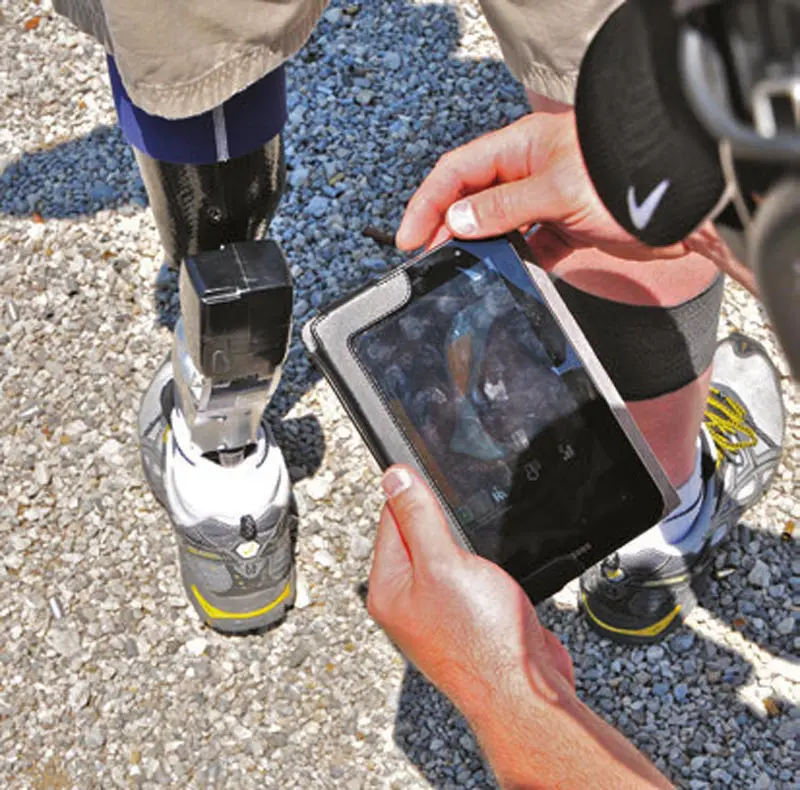
I marveled at watching the BiOM making its rounds through the class. Unlike a normal prosthesis, which is essentially a spring, the BiOM is a machine packed with processors and servos. It senses how fast the amputee wants to walk or run, and then the robotic limb responds with the appropriate amount of force to get the job done. This manifested itself quite well in the live-fire houses.
The stress of the live-fire house is not one you want to be in if you have to think about what your prosthetic limb is going to do. If you need to take a step, you need to know your leg is going to do its job. The BiOM certainly lived up to the challenge. “When the BiOM hits the ground, it moves as if it has a calf muscle, an Achilles, and it’s being controlled by the spinal cord.” Those are the words of BiOM inventor Dr. Hugh Herr, PhD, who coincidentally benefits from the BiOM as a double amputee himself.
FANCY FOOTWORK
I was really looking forward to the lessons on shooting on the move. The folks wearing the BiOM really shone here, and not a single person took a fall during this portion of the class.
I was curious to see how the technology in the BiOM would behave, for example, moving around a kitchen preparing a meal. You might shuffle from the sink to the stove, then lean sideways to grab a knife. If your bionic foot didn’t know the difference between a shuffle/ lean and a shuffle/step, it might launch you into the knife rack. The BiOM is designed for this and knows the difference between a lean and an intended step.
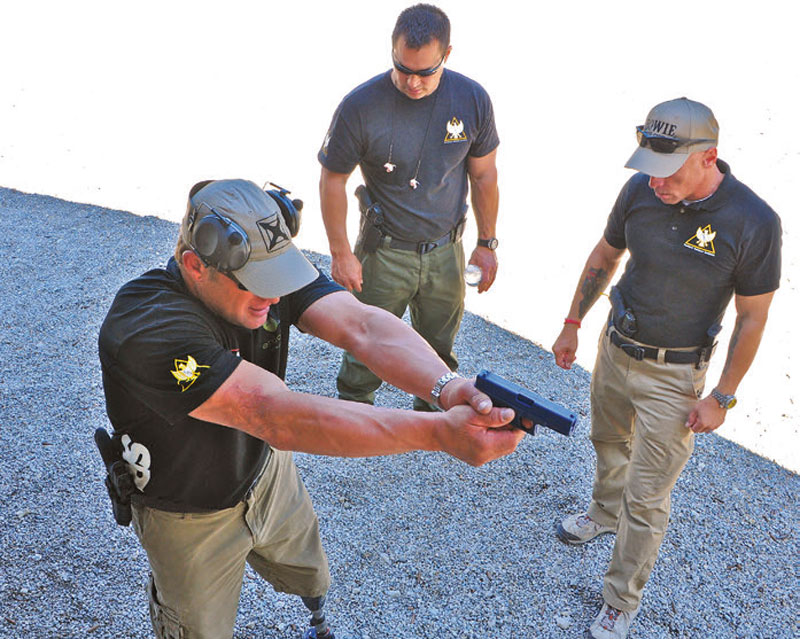
Now let’s put this into the context of the two-way range. Slicing the pie and shuffling around a corner being used as cover could accidentally be misconstrued by a power foot as a step. What if the foot launched you into a room that you were just trying to peek into (and the BiOM has the power to “launch” your body forward quite well)? Luckily the BiOM engineers not only did their homework before releasing the foot, but they also continue to integrate user feedback into the software that drives it.
What’s interesting about this type of technology is that it’s constantly evolving. Like most technology-driven devices, the BiOM will probably never truly be a finished product. Instead it will be an ever-advancing limb that will someday be as rugged as combat gear. Coincidentally, the BiOM is already in use in combat. Soldiers with amputations are now returning to service with the BiOM.
In reading over the data on the BiOM, I discovered several instances where patients stated that if they’d been made aware of the BiOM’s existence earlier in their journey to try to salvage a portion of a failing limb, they would’ve chosen full amputation, gotten the BiOM and moved on (literally).
I have no frame of reference for such a statement. I can’t even begin to comprehend what it is to say, “Take my damaged limb completely off so I can move forward with a given technology to take its place.” It’s such an inherent need of the human psyche to preserve as much of one’s self as possible. To say “remove it so I can be made whole again” is incredible.
CLOSING THOUGHTS
I’d like to thank SRT Prosthetics & Orthotics for the opportunity to witness technology and compassion working in tandem. It was a pleasure to see this group of amputees who are moving ahead with their lives and now are better prepared to defend themselves with a handgun.
